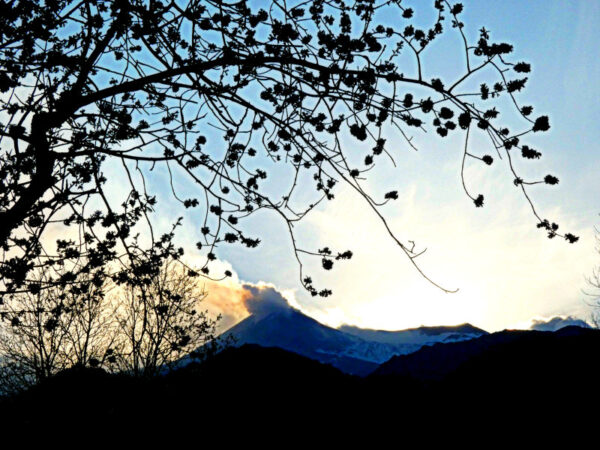The northern side of Mount Etna is the one that retains the coolness of winter for the longest, mixing it with the first warm spring temperatures. This creates a particular climate that allows beautiful colors to bloom. This is also why it is suitable for a spring destination, because it offers some corners full of magic where you feel as if you are somewhere on the Alps, rather than in the heart of the Mediterranean. For the second stage of our spring trips we invite you to follow some easy itineraries starting from Case Pietra Cannone.
Pietra Cannone: a strange name that says a lot
The name “Pietra Cannone” (Cannon Stone) is very common on Etna. The houses that form this small refuge show it off in a particular way, but it can be found in many other places on the volcano. But what does “cannon-stone” mean?
With this name, the people of Etna indicate a very particular stone with hole in it, the result of a phenomenon that sometimes occurs during eruptions. If a very fluid lava hits a tree, enveloping its trunk, the plant burns immediately but the part surrounded by the molten rock becomes “fossilised”. When the eruption ends, what remains of the trunk is gradually consumed in time, and only its “fossilized” circumference remains visible. It will look like a tube carved deep inside the rock: like the mouth of a cannon gun, in fact.
To obtain this effect, the lava must hit the tree when it is still very very hot. And this, on Etna, happens when the lava has recently emerged from the effusive vent. And since there are no trees around the summit craters, the “cannon stones” are clear witnesses of the low-altitude lateral eruptions. Because if the newly gushed lava reaches a plant this can only happen below 2000 metres.
 Pietra Cannone Base Point
Pietra Cannone Base Point
The refuge called Case Pietra Cannone – or Base Point Pietra Cannone – is located at 1150 meters above sea level. along the Mareneve road, on the north side of the volcano. It consists of some hut-shaped buildings, built of wood and lava stone, surrounded by a delightful garden which is filled with flowering trees in spring. The refuge also borders an orchard, which is also in bloom, in spring.
Even though the refuge is now closed, nearby you can find and use a small picnic area that allows everyone to relax and eat meals in nature.
Itineraries from Pietra Cannone
Some easy itineraries to the surrounding area also start from Pietra Cannone. A stone path starts from the houses of Pietra Cannone and allows you to reach interesting places: along the route you come across a large rectangular pit, one of the most beautiful “neviere” in the area. Neviere were used in ancient times to store ice and snow for food purposes. Continuing on the paved path you reach a lava flow dated 1989, within which the route fragments and recomposes several times. Following the lava rocks you reach a pink building, not far away the great Valle del Bove will open up before you. The whole thing, on foot, takes 2 hours and 30 minutes, round trip.
By walking along the normal asphalt road, however, you can reach the Cerrita Wood in less than a one-hour walk, while continuing for about 2 hours you arrive at the Grotta dei Ladroni, a set of underground tunnels often connected to each other and also used in ancient times as “neviere”. (PHOTOS BY G MUSUMECI)